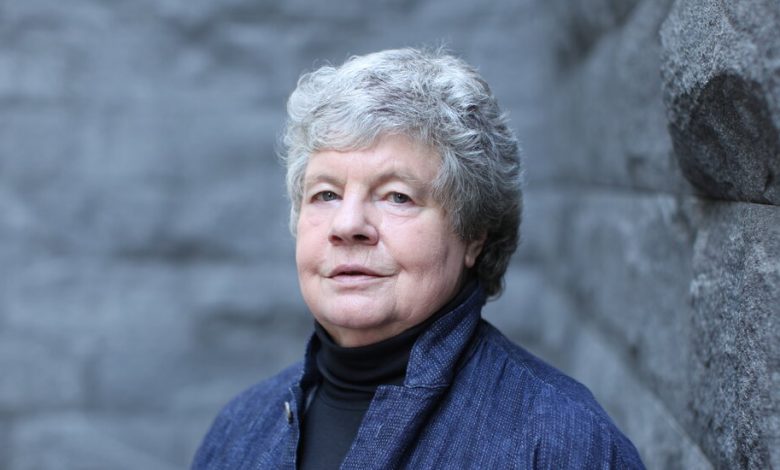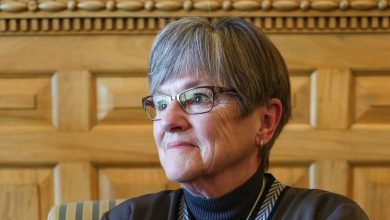A.S. Byatt, Scholar Who Found Literary Fame With Fiction, Dies at 87

A.S. Byatt, one of the most ambitious writers of her generation, whose dazzling 1990 novel, “Possession,” won the Booker Prize and brought her international fame as a novelist and unapologetic intellectual, has died. She was 87.
Her longtime publisher, Chatto & Windus, announced the death in a statement on Friday, saying she had died at her home. It did not say where she lived or cite a cause of death.
Ms. Byatt was a brilliant critic and scholar who broke the academic mold by publishing 11 novels and six collections of short stories. “I am not an academic who happens to have written a novel,” she bristled in an interview with The New York Times Magazine in 1991. “I am a novelist who happens to be quite good academically.”
Ms. Byatt’s intellectual passion was evident in “Possession,” which is subtitled “A Romance.” The book is a scholarly detective story nesting one tale of illicit love inside another: one couple living in the Victorian age, the other in the late 20th century. The mystery is set in motion when a young scholar discovers something extraordinary at the London Library in 1985: old love letters tucked inside a rare edition of Victorian poetry.
Investigating this love affair compels the two modern-day scholars who track them down to fall in love as well. Along the way, Ms. Byatt mocks the foibles of the academic world while effortlessly writing, in the voices of her fictional protagonists, her own Victorian poetry.
The novel became an unexpected best seller and was made into a feature film in 2002 directed by Neil LaBute and starring Gwyneth Paltrow. A novella from her book “Angels and Insects” (1992) had already been made into an Oscar-nominated film in 1995 by Philip Haas. Both film adaptations increased Ms. Byatt’s visibility as an author who widened the scope of contemporary British fiction.
Ms. Byatt built her literary reputation slowly and steadily with two early novels, “The Shadow of the Sun” (1964) and “The Game” (1967), followed by a four-volume series, the Frederica Potter quartet. Like Ms. Byatt, Frederica and her siblings come of age in mid-20th-century England, a period when even highly educated women were expected to stop working if they married. Her own greatest terror was being trapped by domesticity.
“I had this image,” Ms. Byatt told The Guardian in 2009, “of coming out from under and seeing the light for a bit and then being shut in a kitchen, which I think happened to many women of my generation.”
Her early career was overshadowed by her younger sister, the writer Margaret Drabble, whose debut novel, “A Summer Bird Cage” (1963), became an immediate best seller. When she was first published, Ms. Byatt told The Paris Review, she was more afraid of the constant comparison to her better-known sister than of bad reviews. While her early fiction was generally respectfully received, some dismissed it as “another novel by somebody rather like Margaret Drabble.”
The relationship between these highly competitive, literary sisters was always strained. They did not read each other’s work or see each other often, fueling endless gossip for the literary press. Both sisters maintained that their rivalry was overstated, though Ms. Byatt may have undercut that argument by dryly telling the BBC in 1991 that she and Ms. Drabble had “always liked each other on the bottom line.”
But in later years they had a harder time containing themselves, and tension occasionally spilled out into public view. When Ms. Drabble, who survives her sister, published a semi-autobiographical book, “The Pattern in the Carpet” (2009), Ms. Byatt told The Telegraph that she’d rather people didn’t read someone else’s version of her mother. Ms. Drabble fired back that her sister was so territorial, she had been offended when Ms. Drabble included a family tea set in one of her novels. By 2011, Ms. Drabble was telling The Telegraph that their feud was beyond repair.
Ms. Byatt was born Antonia Susan Drabble on Aug. 24, 1936, in Sheffield, England. Her father, John F. Drabble, a barrister and judge, published two novels himself. Her mother, Kathleen (Bloor) Drabble, was a teacher and homemaker.
Antonia was born first and Margaret three years later. Two more siblings followed. Both parents had gone to the University of Cambridge and expected all four of their children to do the same, which they did.
But their mother overtly favored Margaret, which contributed to the competition between the two older girls.
Ms. Byatt described herself as having been an unhappy child who had suffered from severe asthma and spent a great deal of time in bed, where reading became her escape from a tense and angry household.
Ms. Byatt and Ms. Drabble were both sent to the Mount School, a Quaker boarding school in York where their mother taught, and both went on to Newnham College, the women’s college at Cambridge that their mother had attended. Ms. Byatt earned a “first” (highest honors) degree in English in 1957, followed by a year of graduate work at Bryn Mawr College in Pennsylvania. She continued her doctoral studies at Somerville College, Oxford University, where she was discouraged from writing fiction by her Ph.D. supervisor, who told her, as Ms. Byatt recalled: “My dear, every young girl with a first-class degree expects to be able to write a good novel. None of them can.”
When she left Oxford to marry Ian Byatt, an economist, in 1959, her scholarly grant was terminated; men in similar circumstances did not lose their grants.
To her horror, Ms. Byatt found herself relegated to the role of faculty wife at the age of 25. But she persevered, writing with what she described as fierce desperation while caring for two young children. The marriage ended in 1969. She went on to marry Peter John Duffy, an investment analyst, and had two more children.
Ms. Byatt continued to publish novels and critical studies, but then tragedy struck when her only son, Charles, was killed by a drunken driver at the age of 11. Ms. Byatt had just accepted her first teaching position, at University College London. “I think what saved me was the students,” she told The New York Times. “They were in another world, I had to change gear.”
While she never addressed the loss of her child directly in her fiction, she said the experience had changed her writing. “I suddenly thought, Why the hell not have happy endings?” she told The Paris Review. “Everybody knows they’re artificial. Why not have this pleasure, as one has the pleasure of rhyme, as one has the pleasure of color?”
Ms. Byatt wrote and edited many works of literary criticism, including two books on the British writer Iris Murdoch and one about the relationship of William Wordsworth and Samuel Taylor Coleridge. She also edited, with Nicholas Warren, a book of essays about George Eliot. She was a senior lecturer in English at University College from 1972 to 1983.
While some of her writing, particularly her academic writing, was criticized as so dense as to be impenetrable, she was included on The Times of London’s 2008 list of the “50 Greatest British Authors Since 1945.”
Ms. Byatt was made a dame of the British Empire in 1999 for her contributions to contemporary English literature, though some of her most popular works were yet to come.
“The Children’s Book” (2009), based on the life of the popular children’s book author E. Nesbitt, incorporates fairy tales into social commentary on British utopian movements of the early 20th century. The novel was shortlisted for the Booker Prize in 2009 and received the James Tait Black Prize in 2010. “A Stone Woman,” a widely anthologized story that was included in Ms. Byatt’s collection “Little Black Book of Stories” (2018), explores themes of grief and aging through a woman’s metamorphosis into stone following the death of her mother.
Ms. Byatt and her husband had three daughters. Complete information on survivors was not immediately available.
By the time she was in her early 80s, Ms. Byatt felt she had accomplished a lot by simply becoming a writer.
“I think most of my life I’ve felt very lucky, because I expected not to be able to write books,” she said in a 2017 interview with Lit Hub. “And I never really wanted to do anything else.”





